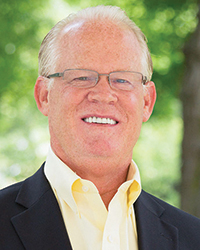
Solect Energy
In the decade that Solect Energy has served the New England commercial real estate market, our company and the solar industry as a whole have transformed, and business owners as well as solar developers and investors have been the beneficiaries of that transformation.
Ten years ago, the amount of solar energy in the U.S. could power 777,000 homes, according to the Solar Energy Industries Association (SEIA). Today, that figure is 13.5 million. As a nation, it took us 40 years to reach one million solar installations, but just three years to hit two million.
A brief retrospective offers a fascinating case study of an industry that has matured and a product that has become undeniably mainstream in 10 short years, as seen from the business, investor, government and utility perspectives.
Business Owners: Business owners no longer ask Solect if solar is a risky investment with questionable Return on Investment (ROI). Skepticism has been replaced by the fact-based certainty that solar is safe and delivers measurable, attractive ROI’s. Today’s property owners are increasingly interested in the viability of their sites or the status of government incentives. That seemingly subtle shift represents a sea change in consumer awareness and knowledge around solar.
That shift has been driven in part by ubiquity: Virtually every businessperson knows a competitor, business partner or neighboring company that has installed solar, and commuters regularly pass large-scale solar installations on our state highways.
Consumer confidence in solar has increased as costs have decreased and technology has advanced. The cost to install a solar energy system has dropped 70% since 2010, according to SEIA, driven in large part through equipment design improvements such as more modular racking systems, which have reduced installation time and labor, and the natural result of increasing competitive pressures.
Similar to the technology advancements that propelled computers into mainstream adoption, solar panels have become more efficient and more powerful, increasingly generating more power per s/f. Panel efficiency has jumped from 180 watts ten years ago to around 400 watts today.
Investors & Lenders: While technically, the lease and loan financing options available for solar have existed throughout the industry’s ascendance, the number of lenders has increased exponentially. Ten years ago, Solect regularly reached out to banks in an effort to inform them of the lending opportunities inherent in solar, in an effort to secure financing for our customers. Now, lenders and investors approach us on a weekly basis.
The reason is simple: Banks and other investors now appreciate the low-risk nature of a product that produces more financial benefit than is needed to cover the loan or lease payments. These attractive economics have spurred many investors to acquire solar projects to hold as part of their own portfolios.
State Governments & Utilities: In the past ten years, state government requirements that investor-owned utilities support solar adoption have evolved and succeeded to the point that interconnecting new “distributed generation” projects such as rooftop solar on a warehouse or a solar canopy over an apartment building’s parking lot is standard procedure with the utilities.
In just the past few years, traditionally conservative government leaders have begun promoting solar energy storage systems, which is a sure sign that they believe the underlying technologies–solar photovoltaics and battery storage–are stable, reliable and cost-effective.
As a result, energy storage is poised to dramatically change the region’s energy landscape as utilities partner with storage owners to draw from batteries at peak times, which cuts costs for utilities while delivering new revenue to storage owners. The financial opportunity for business owners who install solar paired with storage is so substantial, the potential exists for storage to surpass solar panels as an adopted energy solution.
Looking Ahead: Deciding at what point on a technology’s trajectory of growth to invest your company’s hard-earned resources should be of little concern to potential solar owners. Many “early adopters” have already recouped their investments and now have the option of continuing to generate free energy that offsets more expensive utility power, or replacing their systems with even more productive “newer models.” That decision requires analysis similar to that of a car owner debating whether or not to trade in a car for a new one with higher fuel efficiency once the original loan has been paid; there is no right or wrong answer—only different benefits.
Those benefits have boosted solar energy into the enviable position of fastest growing new energy source in the country. The International Energy Agency predicts that by 2024, almost 33% of the world’s electricity will come from renewable sources including solar. Solar is unquestionably mainstream, and it will continue delivering measurable benefits to stakeholders including business owners for the next decade and beyond.
Craig Huntley is the chief development officer for Solect Energy in Hopkinton, Mass.






